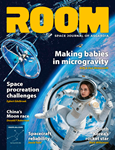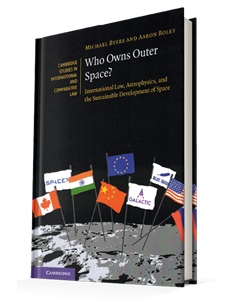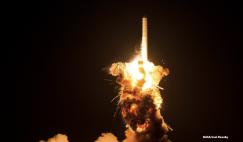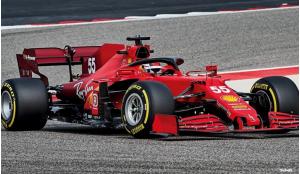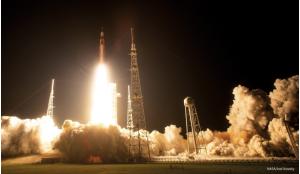No doubt about it: space sustainability is the topic of the day and everyone is jumping on the bandwagon. It’s about time too, because the wheels on that wagon are about to fall off!
The book’s title – Who Owns Outer Space? – latches onto a convenient space meme dating back to early space law papers. The question is what a physicist, with tongue in cheek, would call ‘non-trivial’. For decades, the answer has been “no-one”, because the 1967 Outer Space Treaty prohibits national appropriation and declares space to be the “province of mankind”. But those words were written more than half a century ago and times have changed. Space is no longer a laboratory for government space agencies and is fast becoming a playground for wealthy entrepreneurs and ultra-rich tourists.
In a series of vignettes, the authors highlight a Florida couple with tickets for both Virgin Galactic and Blue Origin flights; the destruction of the Kosmos 1408 satellite by a “powerful military [demonstrating] a capability that everyone already knew it possessed”; and Elon Musk’s apparent desire to control “large swaths of Earth’s most desirable orbits”. At what point does SpaceX “exceed the carrying capacity of LEO and degrade spaceflight safety for everyone?”, they ask. One should add that ‘other space entrepreneurs are available’ and Jeff Bezos, for example, also gets a drubbing here.
The book examines a selection of “grand challenges”, which the authors define as problems on a similar scale to global warming and Russia’s invasion of Ukraine. Space debris is the obvious one, but they recognise other global space issues including tourism, mega-constellations, mining and planetary defence.
In a rare combination of talents, the authors show they’re capable not only of stirring readers’ emotions with tales of iniquity and catastrophe, but also of addressing the serious issues. For example, in the space tourism chapter, it is not long before Musk and Bezos bashing turns to the 1968 Rescue Agreement and the climatic impact of rocket plumes. The sound, academic footing of the book is emphasised by its copious references, 18-page bibliography and detailed index.
It comes as no surprise that a book such as this is not blessed with a happy ending. Channelling the war in Ukraine, the authors consider “whether the long-stable space governance regime will fracture into two parallel systems, one led by the US and the other by Russia and China”.
They end with the depressing concept of the ‘pellet ring’, a “potential weapon” of the Cold War that involves launching millions of tiny steel balls into orbit. This is not to be disheartening, they add, but to “emphasise the essential nature of transdisciplinary, policy-oriented research”… which is an academic way of saying we need to take a holistic approach and work together.
Although the authors forget to return to the question of who owns space, they succeed in concluding with a bit of a kicker – the thought that policy makers may have focused on anti-satellite weapons while overlooking “something as simple as dumping a playground’s worth of sand into orbit”. It seems, after all, that we are back to no-one owning outer space… at least not for long!


